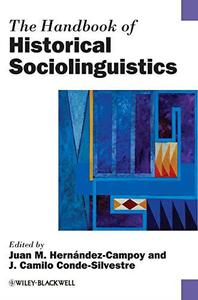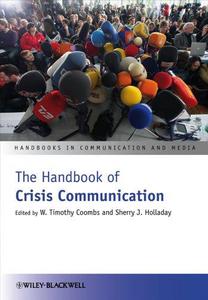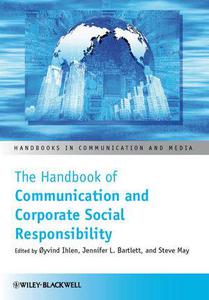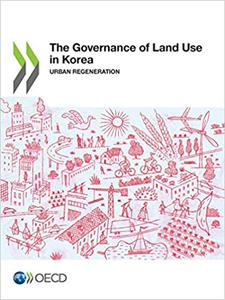

E-Books → The Handbook of Historical Sociolinguistics
Published by: voska89 on 29-07-2022, 20:58 |  0
0

The Handbook of Historical Sociolinguistics By
2012 | 695 Pages | ISBN: 140519068X | PDF | 8 MB
Written by an international team of leading scholars, this groundbreaking reference work explores the nature of language change and diffusion, and paves the way for future research in this rapidly expanding interdisciplinary field. Features 35 newly-written essays from internationally acclaimed experts that reflect the growth and vitality of the burgeoning area of historical sociolinguistics Examines how sociolinguistic theoretical models, methods, findings, and expertise can be used to reconstruct a language's past in order to explain linguistic changes and developments Bridges the gap between the past and the present in linguistic studies Structured thematically into sections exploring: origins and theoretical assumptions; methods for the sociolinguistic study of the history of languages; linguistic and extra-linguistic variables; historical dialectology, language contact and diffusion; and attitudes to language Content: Chapter 1 Diachrony vs Synchrony: The Complementary Evolution of Two (Ir)reconcilable Dimensions (pages 9-21): Jean AitchisonChapter 2 Historical Sociolinguistics: Origins, Motivations, and Paradigms (pages 22-40): Terttu Nevalainen and Helena Raumolin?BrunbergChapter 3 Social History and the Sociology of Language (pages 41-59): Robert McColl MillarChapter 4 The Application of the Quantitative Paradigm to Historical Sociolinguistics: Problems with the Generalizability Principle (pages 61-79): Juan M. Hernandez?Campoy and Natalie SchillingChapter 5 The Uniformitarian Principle and the Risk of Anachronisms in Language and Social History (pages 80-98): Alexander BergsChapter 6 The Use of Linguistic Corpora for the Study of Linguistic Variation and Change: Types and Computational Applications (pages 99-122): Pascual CantosChapter 7 Editing the Medieval Manuscript in its Social Context (pages 123-139): Nila Vazquez and Teresa Marques?AguadoChapter 8 Medical, Official, and Monastic Documents in Sociolinguistic Research (pages 140-155): Laura Esteban?SeguraChapter 9 The Use of Private Letters and Diaries in Sociolinguistic Investigation (pages 156-169): Stephan ElspassChapter 10 The Use of Literary Sources in Historical Sociolinguistic Research (pages 170-190): K. AnipaChapter 11 Early Advertising and Newspapers as Sources of Sociolinguistic Investigation (pages 191-210): Carol PercyChapter 12 Orthographic Variables (pages 211-236): Hanna Rutkowska and Paul RosslerChapter 13 Phonological Variables (pages 237-252): Anna HebdaChapter 14 Grammatical Variables (pages 253-270): Anita Auer and Anja VoesteChapter 15 Lexical?Semantic Variables (pages 271-292): Joachim GrzegaChapter 16 Pragmatic Variables (pages 293-306): Andreas H. Jucker and Irma TaavitsainenChapter 17 Class, Age, and Gender?Based Patterns (pages 307-331): Agnieszka Kielkiewicz?JanowiakChapter 18 The Role of Social Networks and Mobility in Diachronic Sociolinguistics (pages 332-352): Juan Camilo Conde?SilvestreChapter 19 Race, Ethnicity, Religion, and Castes (pages 353-365): Rajend MesthrieChapter 20 The Teleology of Change: Functional and Non?Functional Explanations for Language Variation and Change (pages 367-386): Paul T. RobergeChapter 21 Internally? and Externally?Motivated Language Change (pages 387-407): Raymond HickeyChapter 22 Lexical Diffusion and the Regular Transmission of Language Change in its Sociohistorical Context (pages 408-426): Brian D. JosephChapter 23 The Timing of Language Change (pages 427-450): Mieko OguraChapter 24 Innovation Diffusion in Sociohistorical Linguistics (pages 451-464): David BritainChapter 25 Historical Dialectology: Space as a Variable in the Reconstruction of Regional Dialects (pages 465-479): Anneli Meurman?SolinChapter 26 Linguistic Atlases: Empirical Evidence for Dialect Change in the History of Languages (pages 480-500): Roland KehreinChapter 27 Historical Sociolinguistic Reconstruction beyond Europe: Case Studies from South Asia and Fiji (pages 501-519): Matthew ToulminChapter 28 Multilingualism, Code?Switching, and Language Contact in Historical Sociolinguistics (pages 520-533): Herbert SchendlChapter 29 The Impact of Migratory Movements on Linguistic Systems: Transplanted Speech Communities and Varieties from a Historical Sociolinguistic Perspective (pages 534-551): Daniel SchreierChapter 30 Convergence and Divergence in World Languages (pages 552-567): Roger WrightChapter 31 Sociolinguistics and Ideologies in Language History (pages 569-584): James MilroyChapter 32 Language Myths (pages 585-606): Richard J. WattsChapter 33 Linguistic Purism (pages 607-625): Nils Langer and Agnete NesseChapter 34 The Reconstruction of Prestige Patterns in Language History (pages 626-638): Anni Sairio and Minna Palander?CollinChapter 35 Written Vernaculars in Medieval and Renaissance Times (pages 639-654): Catharina Peersman
E-Books → The Handbook of Crisis Communication
Published by: voska89 on 29-07-2022, 20:58 |  0
0

The Handbook of Crisis Communication By
2009 | 756 Pages | ISBN: 1405194413 | PDF | 6 MB
Written as a tool for both researchers and communication managers, the Handbook of Crisis Communication is a comprehensive examination of the latest research, methods,and critical issues in crisis communication. Includes in-depth analyses of well-known case studies in crisis communication, from terrorist attacks to Hurricane KatrinaContent: Chapter 1 Parameters for Crisis Communication (pages 17-53): Dr. W. Timothy CoombsChapter 2 Crisis Communication and Its Allied Fields (pages 54-64): Dr. W. Timothy CoombsChapter 3 Crisis Communication Research in Public Relations Journals: Tracking Research Trends over Thirty Years (pages 65-90): Seon?Kyoung An and Dr I?Huei ChengChapter 4 Organizational Networks in Disaster Response: An Examination of the US Government Network's Efforts in Hurricane Katrina (pages 93-114): Gabriel L. AdkinsChapter 5 Regaining Altitude: A Case Analysis of the JetBlue Airways Valentine's Day 2007 Crisis (pages 115-140): Gregory G. EfthimiouChapter 6 The Press as Agent of Cultural Repair: A Textual Analysis of News Coverage of the Virginia Tech Shootings (pages 141-158): Mohamad H. Elmasry and Vidhi ChaudhriChapter 7 Are They Practicing What We Are Preaching? An Investigation of Crisis Communication Strategies in the Media Coverage of Chemical Accidents (pages 159-180): Dr. Sherry J. HolladayChapter 8 Examining the Effects of Mutability and Framing on Perceptions of Human Error and Technical Error Crises: Implications for Situational Crisis Communication Theory (pages 181-204): Dr. W. Timothy Coombs and Dr. Sherry J. HolladayChapter 9 How Do Past Crises Affect Publics' Perceptions of Current Events? An Experiment Testing Corporate Reputation during an Adverse Event (pages 205-220): J. Drew ElliotChapter 10 Crisis Response Effectiveness: Methodological Considerations for Advancement in Empirical Investigation into Response Impact (pages 221-242): Tomasz A. Fediuk, Kristin M. Pace and Isabel C. BoteroChapter 11 "We tell people. It's up to them to be prepared." Public Relations Practices of Local Emergency Managers (pages 245-260): Dr Robert Littlefield, Katherine Rowan, Dr Shari R. Veil, Lorraine Kisselburgh, Kimberly Beauchamp, Kathleen Vidoloff, Marie L. Dick, Theresa Russell?Loretz, Dr Induk Kim, Angelica Ruvarac, Quian Wang, Toni Siriko Hoang, Bonita Neff, Teri Toles?Patkin, Rod Troester, Shama Hyder, Steven Venette and Dr Timothy L. SellnowChapter 12 Thirty Common Basic Elements of Crisis Management Plans: Guidelines for Handling the Acute Stage of "Hard" Emergencies at the Tactical Level (pages 261-281): Alexander G. NikolaevChapter 13 Oil Industry Crisis Communication (pages 285-300): Dr Michelle Maresh and David E. WilliamsChapter 14 Educational Crisis Management Practices Tentatively Embrace the New Media (pages 301-318): Dr Barbara S. GaineyChapter 15 FEMA and the Rhetoric of Redemption: New Directions in Crisis Communication Models for Government Agencies (pages 319-334): Dr Elizabeth Johnson Avery and Dr Ruthann W. LariscyChapter 16 Effective Public Relations in Racially Charged Crises: Not Black or White (pages 335-358): Dr Brooke Fisher LiuChapter 17 Public Relations and Reputation Management in a Crisis Situation: How Denny's Restaurants Reinvigorated the Firm's Corporate Identity (pages 359-377): Dr Ali M. Kanso, Steven R. Levitt and Richard Alan NelsonChapter 18 New Media for Crisis Communication: Opportunities for Technical Translation, Dialogue, and Stakeholder Responses (pages 381-395): Dr Keri K. Stephens and Dr Patty MaloneChapter 19 Organizational and Media Use of Technology during Fraud Crises (pages 396-409): Christopher Caldiero, Dr Maureen Taylor and Lia UngureanuChapter 20 Organizational Use of New Communication Technology in Product Recall Crises (pages 410-421): Dr Maureen TaylorChapter 21 Crisis Communication, Complexity, and the Cartoon Affair: A Case Study (pages 425-448): Finn Frandsen and Dr Winni JohansenChapter 22 Crisis Communication and Terrorist Attacks: Framing a Response to the 2004 Madrid Bombings and 2005 London Bombings (pages 449-466): Maria Jose Canel and Karen SandersChapter 23 Negotiating Global Citizenship: Mattel's 2007 Recall Crisis (pages 467-488): Dr. Patricia A. CurtinChapter 24 Celebrating Expulsions? Crisis Communication in the Swedish Migration Board (pages 489-507): Dr. Orla VigsoChapter 25 Crisis Communicators in Change: From Plans to Improvisations (pages 511-526): Dr. Jesper Falkheimer and Dr. Mats HeideChapter 26 Contingency Theory of Strategic Conflict Management: Directions for the Practice of Crisis Communication from a Decade of Theory Development, Discovery, and Dialogue (pages 527-549): Dr. Augustine Pang, Dr. Yan Jin and Glen T. CameronChapter 27 Crisis?Adaptive Public Information: A Model for Reliability in Chaos (pages 550-567): Dr. Suzanne HorsleyChapter 28 Communicating Before a Crisis: An Exploration of Bolstering, CSR, and Inoculation Practices (pages 568-590): Dr. Shelley Wigley and Michael PfauChapter 29 Who Suffers? The Effect of Injured Party on Attributions of Crisis Responsibility (pages 591-606): Sun?A Park and Dr. Maria E. Len?RiosChapter 30 The Dialectics of Organizational Crisis Management (pages 607-634): Charles Conrad, Jane Stuart Baker, Chris Cudahy and Jennifer WillyardChapter 31 Exploring Crisis from a Receiver Perspective: Understanding Stakeholder Reactions during Crisis Events (pages 635-656): Tomasz A. Fediuk, Dr. W. Timothy Coombs and Isabel C. BoteroChapter 32 Credibility Seeking through an Interorganizational Alliance: Instigating the Fen?Phen Confrontation Crisis (pages 657-674): Dr. Timothy L. Sellnow, Dr. Shari R. Veil and Renae A. StreifelChapter 33 Future Directions of Crisis Communication Research: Emotions in Crisis - The Next Frontier (pages 677-682): Dr. Yan Jin and Dr. Augustine PangChapter 34 Complexity and Crises: A New Paradigm (pages 683-690): Dr. Dawn R. Gilpin and Dr. Priscilla MurphyChapter 35 Considering the Future of Crisis Communication Research: Understanding the Opportunities Inherent to Crisis Events through the Discourse of Renewal (pages 691-697): Robert R. Ulmer, Dr. Timothy L. Sellnow and Matthew W. SeegerChapter 36 Toward a Holistic Organizational Approach to Understanding Crisis (pages 698-704): Dr. Maureen TaylorChapter 37 What is a Public Relations "Crisis?" Refocusing Crisis Research (pages 705-712): Michael L. KentChapter 38 Crisis and Learning (pages 713-718): Dr. Larsake LarssonChapter 39 Pursuing Evidence?Based Crisis Communication (pages 719-725): Dr. W. Timothy Coombs
E-Books → The Handbook of Communication and Corporate Social Responsibility
Published by: voska89 on 29-07-2022, 20:58 |  0
0

The Handbook of Communication and Corporate Social Responsibility By
2011 | 601 Pages | ISBN: 1444336347 | PDF | 4 MB
This book represents the definitive research collection for corporate social responsibility communication, offering cross-disciplinary and international perspectives from the top scholars in the field.Addresses a gap in the existing CSR literature Demonstrates the relevance of effective CSR communication for the management of organizations The 28 contributions come from top scholars in public relations, organizational communication, reputation management, marketing and management Content: Chapter 1 Corporate Social Responsibility and Communication (pages 1-22): Dr. oyvind Ihlen, Jennifer L. Bartlett and Steve MayChapter 2 The Paradoxes of Communicating Corporate Social Responsibility (pages 23-43): Sandra Waddock and Dr Bradley K. GooginsChapter 3 Management, Communication, and Corporate Social Responsibility (pages 45-66): Jennifer L. Bartlett and Bree DevinChapter 4 Public Relations and Corporate Social Responsibility (pages 67-86): Jennifer L. BartlettChapter 5 Organizational Communication and Corporate Social Responsibility (pages 87-109): Steve MayChapter 6 Marketing and Corporate Social Responsibility (pages 110-127): Peggy Simcic BronnChapter 7 Reputation Management and Corporate Social Responsibility (pages 128-146): Mark Eisenegger and Mario SchranzChapter 8 Rhetoric and Corporate Social Responsibility (pages 147-166): Dr. Oyvind IhlenChapter 9 Ethics (pages 167-187): Jacquie L'Etang, Jairo Lugo?Ocando and Zeti Azreen AhmadChapter 10 Risk Communication and Corporate Social Responsibility (pages 188-207): Michael J. Palenchar, Tatjana M. Hocke and Robert L. HeathChapter 11 Trust and Credibility as the Basis of Corporate Social Responsibility (pages 208-230): Gunter Bentele and Howard NothhaftChapter 12 Corporate Social Responsibility Communication and Dialogue (pages 231-251): Ursa Golob and Klement PodnarChapter 13 Transparency and Neoliberal Logics of Corporate Economic and Social Responsibility (pages 252-275): Majia Holmer NadesanChapter 14 The Concept of Stakeholders and its Relevance for Corporate Social Responsibility Communication (pages 276-294): Juliana RauppChapter 15 Significance of Sector?Specific Corporate Social Responsibility Initiatives (pages 295-314): Dr Augustine Pang, Dr Angela Mak and Joanne Mui?Hean LeeChapter 16 Corporate (Social) Responsibility and Issues Management (pages 315-337): Robert L. Heath and Michael J. PalencharChapter 17 Communicating Corporate Social Responsibility through Nonfinancial Reports (pages 338-357): Elise Perrault Crawford and Cynthia Clark WilliamsChapter 18 Communicating Corporate Social Responsibility through the Internet and Social Media (pages 358-378): Paul CapriottiChapter 19 Communicating Corporate Social Responsibility through Corporate Image Advertising (pages 379-398): Alan A. PomeringChapter 20 New Partnerships for a New Generation of Corporate Social Responsibility (pages 399-422): Melissa J. Bator and Cynthia StohlChapter 21 Media Relations and Corporate Social Responsibility (pages 423-444): Craig E. CarrollChapter 22 NGOs as Communicative Actors within Corporate Social Responsibility Efforts (pages 445-466): Sarah E. DempseyChapter 23 Communication and Corporate Social Responsibility (pages 467-488): Stefan Wehmeier and Friederike SchultzChapter 24 Interrogating the Communicative Dimensions of Corporate Social Responsibility (pages 489-504): Lars Thoger Christensen and George CheneyChapter 25 A Provocation (pages 505-515): Shirley Leitch and Judy MotionChapter 26 Commentary (pages 516-533): Guler Aras and David CrowtherChapter 27 The View from Organizational Studies (pages 534-549): David Grant and Daniel NybergChapter 28 Conclusions and Take away Points (pages 550-571): Dr. Oyvind Ihlen, Jennifer L. Bartlett and Steve May
E-Books → The Governance of Land Use in Korea Urban Regeneration
Published by: voska89 on 29-07-2022, 20:58 |  0
0

OECD, "The Governance of Land Use in Korea Urban Regeneration"
English | 2019 | pages: 128 | ISBN: 9264400222 | PDF | 5,4 mb
This report examines land-use trends, policies and practices in Korea, in particular in the city of Busan, through the lens of urban regeneration and citizen participation. Land-use planning is critical for the efficient and inclusive management of cities, pursuing sustainable and balanced development and improving quality of life and regional competitiveness. Korea has benefitted from comprehensive and well-structured, hierarchical land-use planning and urban regeneration frameworks. However, faced with a series of demographic and economic challenges, together with geographic factors and historical developments, Korea needs to re-evaluate land-use management and urban regeneration to leverage inclusive growth and boost competitiveness in Korean cities. This report argues that involving citizens in land-use planning and urban regeneration is essential to collect better quality information as a basis for plans, decisions and outcomes. This report is of relevant to urban planners, land use especialists, and city managers who work on urban regeneration projects and citizens' participation.
E-Books → The Evolving Relationship between China, the EU and the USA A New Global Order
Published by: voska89 on 29-07-2022, 20:58 |  0
0

Jing Men, "The Evolving Relationship between China, the EU and the USA: A New Global Order? "
English | ISBN: 0367133881 | 2019 | 234 pages | EPUB | 1252 KB
This book closely scrutinizes the individual and collective roles played by China, the EU and the USA in contemporary world politics.
E-Books → The Easy 5-Ingredient Indian Cookbook 75 Classic Indian Recipes Made Simple
Published by: voska89 on 29-07-2022, 20:58 |  0
0

The Easy 5-Ingredient Indian Cookbook: 75 Classic Indian Recipes Made Simple by Meena Agarwal
English | May 3, 2022 | ISBN: 1638784426 | 202 pages | EPUB | 2.59 Mb
Cook delicious Indian cuisine with simple, 5-ingredient recipes
E-Books → The Diary of a Young Girl The Definitive Edition
Published by: voska89 on 29-07-2022, 20:57 |  0
0

Anne Frank, Otto M. Frank, Mirjam Pressler, Susan Massotty, "The Diary of a Young Girl: The Definitive Edition"
English | 1997 | ISBN: 0553577123, 0140264736 | 400 pages | EPUB | 13.9 MB
Discovered in the attic in which she spent the last years of her life, Anne Frank's remarkable diary has since become a world classic-a powerful reminder of the horrors of war and an eloquent testament to the human spirit.
E-Books → The Colitis-Friendly Kitchen Simple Recipes for Happy, Healthy Stomachs
Published by: voska89 on 29-07-2022, 20:57 |  0
0

The Colitis-Friendly Kitchen: Simple Recipes for Happy, Healthy Stomachs by Zoe Moore
English | 2022 | ISBN: N/A | ASIN: B0B7GC4GG7 | 75 pages | EPUB | 2.32 Mb
Having colitis isn't fun. At least we've never met anyone who enjoys having it. The thing is, even when you have colitis, it doesn't mean you can't enjoy delicious meals! To show you just how easy and tasty healthy cooking can be, we've put together this cookbook for you. Filled with 30 amazing recipes to help you get started, The Colitis-Friendly Kitchen is all you need to make peace with your colitis.
E-Books → The Cambridge Handbook of Artificial Intelligence
Published by: voska89 on 29-07-2022, 20:57 |  0
0

The Cambridge Handbook of Artificial Intelligence: Global Perspectives on Law and Ethics
English | 2022 | ISBN: 1316512800 | 455 Pages | PDF | 4 MB
The technology and application of artificial intelligence (AI) throughout society continues to grow at unprecedented rates, which raises numerous legal questions that to date have been largely unexamined. Although AI now plays a role in almost all areas of society, the need for a better understanding of its impact, from legal and ethical perspectives, is pressing, and regulatory proposals are urgently needed. This book responds to these needs, identifying the issues raised by AI and providing practical recommendations for regulatory, technical, and theoretical frameworks aimed at making AI compatible with existing legal rules, principles, and democratic values. An international roster of authors including professors of specialized areas of law, technologists, and practitioners bring their expertise to the interdisciplinary nature of AI.
E-Books → The Cambridge Companion to Ezra Pound
Published by: voska89 on 29-07-2022, 20:57 |  0
0

Ira B. Nadel, "The Cambridge Companion to Ezra Pound"
English | 1999 | ISBN: 052164920X, 0521431174 | EPUB | pages: 352 | 0.6 mb
This Companion contains fifteen chapters by leading international scholars, who together reflect diverse but complementary approaches to the study of Ezra Pound's poetry and prose. They consider the poetics, foreign influences, economics, politics and publication history of Pound's entire corpus, and also situate Pound's work in the context of Modernism, illustrating his influence on contemporaries such as T. S. Eliot and James Joyce. Taken together, the chapters offer a sustained examination of one of the most versatile, influential and certainly controversial poets of the modern period.



